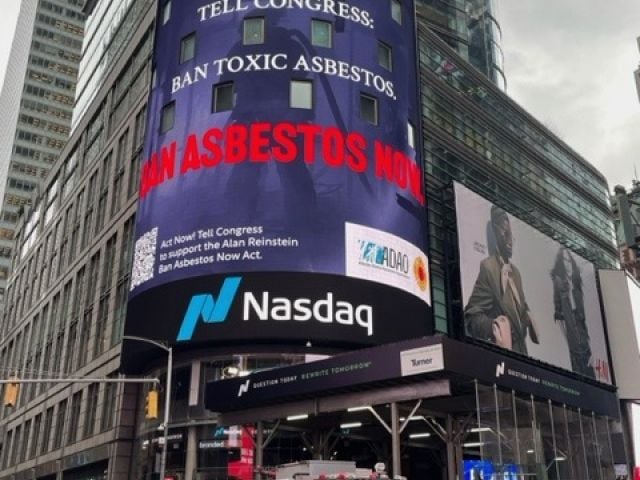
By Linda Reinstein, President/CEO and Co-founder, Asbestos Disease Awareness Organization
Asbestos is probably the most infamous carcinogenic material ever used. It has been responsible for the deaths of an untold number of people going as far back as 100 AD, when contemporary reports tell of Greek and Roman slaves falling ill after weaving cloth made from the substance.
Many Americans believe the mineral has been banned or restricted in the United States, but that is not the case. Manufacturers import significant amounts for use in a wide range of products, such as concrete and floor tiles. Domestic use increased from 3.8 million pounds in 2007 to 4.1 million pounds in 2008, with 76 percent used in roofing materials, including shingles.
Asbestos was the first substance the U.S. Environmental Protection Agency (EPA) attempted to ban in 1989 under the Toxics Substances Control Act. However, EPA's decision was overturned two years later in the U.S. Circuit Court of Appeals for the Fifth Circuit. While Congress remains committed to banning asbestos, the U.S. has been unable to join more than 50 countries that have successfully banned asbestos.
EWG has estimated that asbestos is currently responsible for approximately 10,000 deaths a year in the United States alone, with more people dying from related diseases annually than from skin cancer or from fires, drowning and Hodgkin's disease combined. The World Health Organization, Environmental Protection Agency, U.S. Surgeon General all agree that "there is no safe level of asbestos exposure."
In April, more than 20 of the world's preeminent experts, including physicians, scientists and victim advocates, will gather in Chicago for the 6th Annual International Asbestos Awareness Conference to "provide the most advanced medical, occupational and environmental information available about asbestos-related disease to individuals throughout the world," according the conference's mission statement. "Presentations will include preventing exposure, identifying occupational and non-occupational exposure, public health and environmental aspects, early warning symptoms and trauma."
If you're unable to attend the conference and are interested in learning more about asbestos and what you and your family can do to prevent or reduce your exposure to it, visit the Asbestos Disease Awareness Organization's website.



